ASTM A335 P5
Read more

12Cr1MoVG is a high-strength, low-alloy steel often used in the manufacture of boiler tubes and other high-temperature components due to its excellent creep resistance and good weldability.
Download MTC PDF

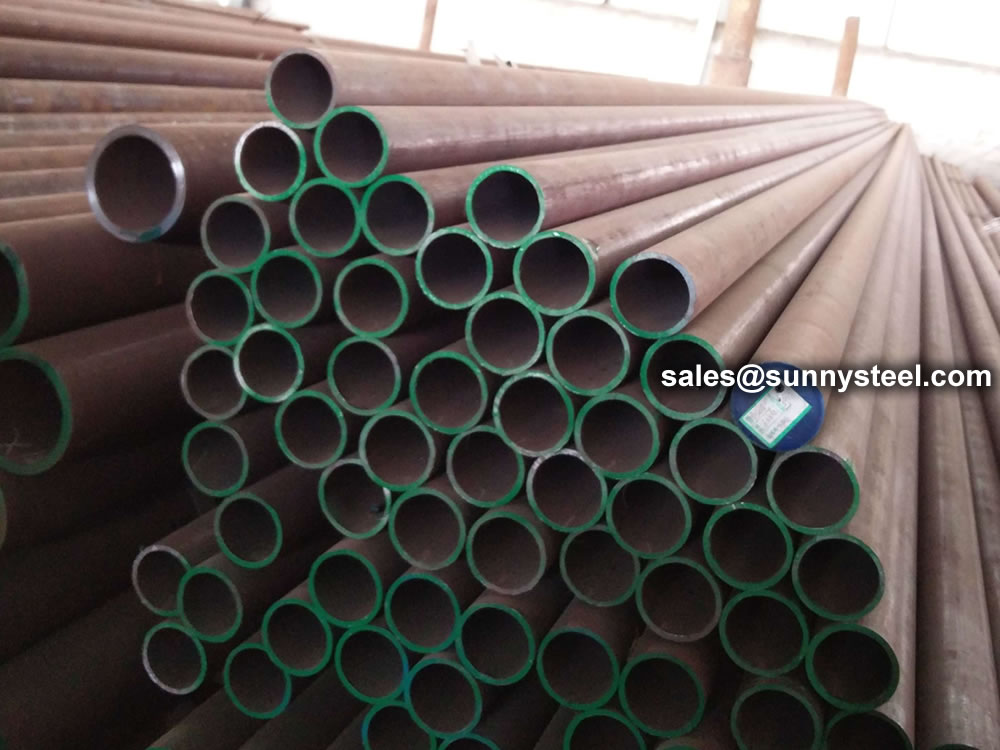
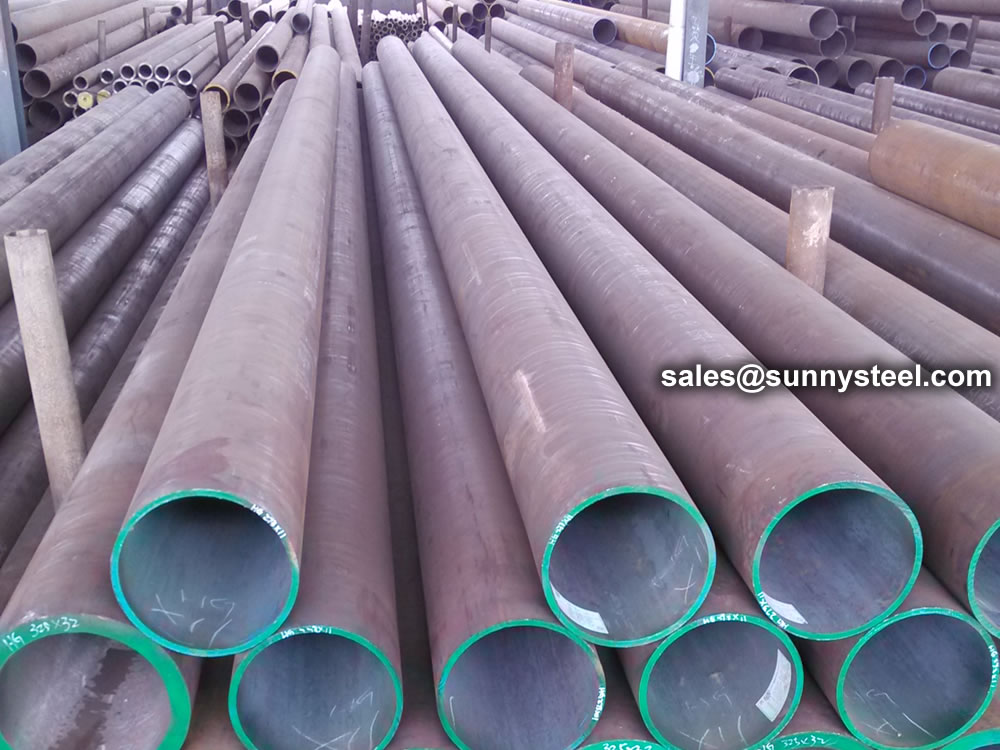
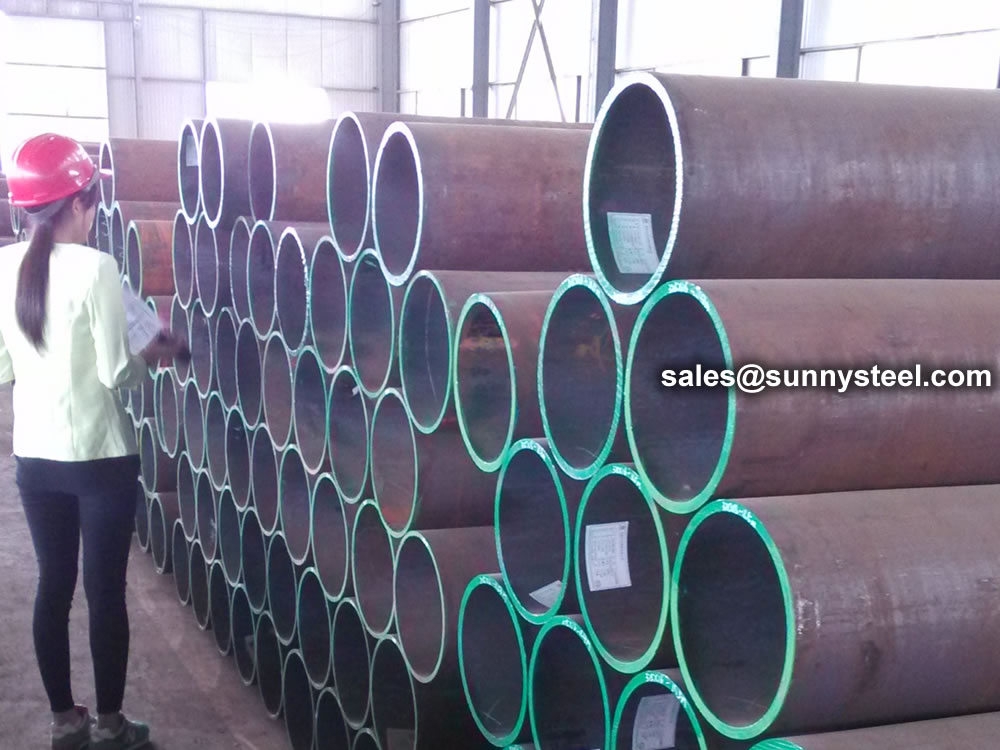
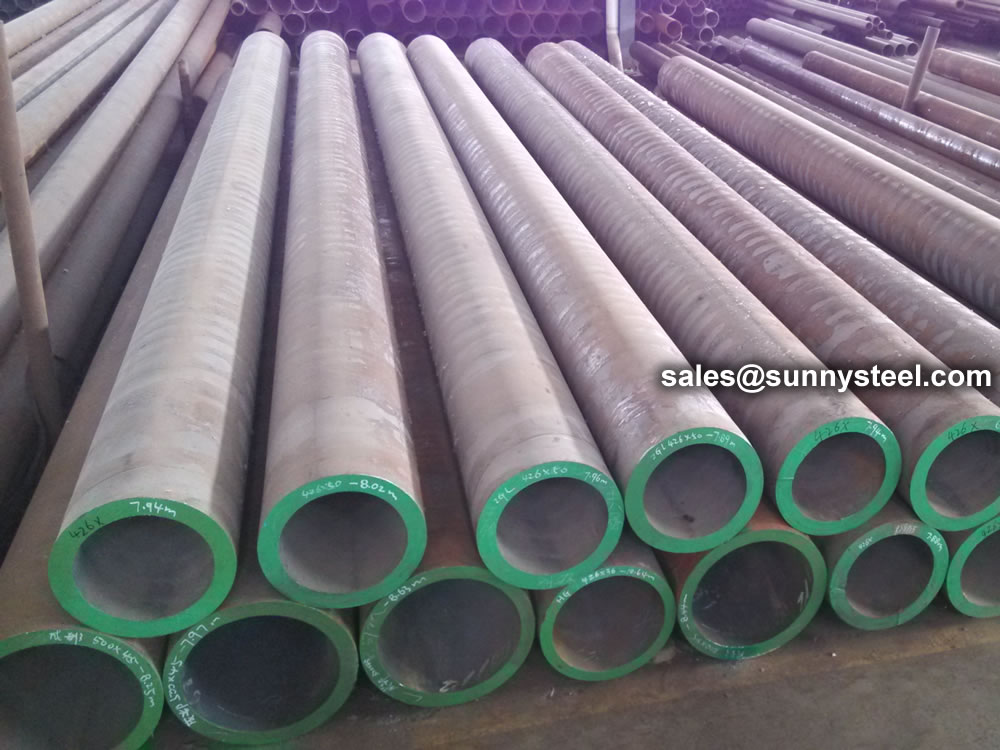
12Cr1MoVG is a low alloy, heat-resistant steel that was introduced from the Soviet Union in the 1950s and 1960s. It is commonly used for boiler main steam pipes. 12Cr1MoVG is a professional steel and is suitable for boilers or high temperature/pressure vessels. It is also used in bars, sheets, plates, steel coils, and steel pipes.
12Cr1MoVG is similar to 1.25Cr-0.5Mo, but with the addition of V. It is normalized and tempered at high temperatures. Its normal metal organization includes ferrite and pearlite. Compared with other low-alloy pearlitic heat-resistant steels, 12Cr1MoVG has better processability and higher thermal strength.
As the material's service time increases, its endurance performance deteriorates. For example, one study found that a 12Cr1MoVG steel main steam pipe spheroidized and deteriorated after 70,000 hours of service.
The range of 12Cr1MoVG pipe sizes that may be examined by each method shall be subjected to the limitations in the scope of the respective practice.
The material 12Cr1MoVG is commonly used in the production of high-pressure boiler tubes and piping systems. Its equivalent materials in other standards include:
What is 12Cr1MoVG equivalent to ASME?
The equivalent material to 12Cr1MoVG in the ASME standard is ASTM A335 P11. Both materials have similar chemical compositions and mechanical properties, making them suitable for use in high-temperature and high-pressure applications, such as in the construction of boilers and piping systems.
12Cr1MoVG is a Cr-Mo-V low alloy heat-resistant steel introduced from the Soviet Union in the 1950s and 1960s. Vanadium is an element that reduces the y-phase region. When dissolved in y-fe, it will inhibit the transformation of ADI to pearlite, which is beneficial to the formation of ADI. The total amount of alloy in 12Cr1MoVG steel is only one half of that of 2.25Cr-1Mo steel, but the endurance strength (580 ° C) is 1.4 times of that of 2.25Cr-1Mo steel. Similar steel grades widely used abroad include ASTM a405 p24 in the United States, bs3604 in the United Kingdom, DIN 13crmov42 in Germany, etc.
GB 5310 12Cr1MoVG steel will be smelted by electric furnace plus furnace refining, oxygen converter plus furnace refining or electroslag remelting method.
The tube blank can be produced by continuous casting, die casting or hot rolling (forging).
Forging and rolling: the initial forging temperature is 1180-1145 ℃, and the final forging temperature is greater than 850 ℃. After forging, stack cooling is required.
GB 5310 12Cr1MoVG Steel tubes shall be manufactured by hot rolling (extrusion, expansion) or cold drawing (rolling). Cold and hot processing: small diameter steel pipes can be cold bent without heat treatment after bending. Large diameter thin-walled tube can be cold bent, after bending, it needs to do high temperature heat treatment. Large diameter thick wall pipe needs hot bending. The heating temperature of the hot bend is 980 ° C, and the final bending temperature is more than 800 ℃. After bending, it needs normalizing and adding back.
Note: This inventory is part of the inventory, demand and other models in stock or order materials, please contact us.
12Cr1MoV steel is normalized and tempered at high temperatures, where its normal metal organization includes ferrite and pearlite (or local bainite). Compared with the same type of low-alloy pearlitic heat-resistant steel, 12Cr1MoV shows better processability and much higher thermal strength.
12Cr1MoVG is a type of high-pressure boiler steel used in the production of boilers and pressure vessels. It has a high temperature strength, good thermal conductivity, and excellent corrosion resistance. It is commonly used in the manufacturing of power plant boilers, industrial boilers, and pressure vessels in the petrochemical industry.
12Cr1MoVG is a Cr-Mo-V low alloy heat-resistant steel introduced from the Soviet Union in the 1950s and 1960s. Vanadium is an element that reduces the y-phase region. When dissolved in y-fe, it will inhibit the transformation of ADI to pearlite, which is beneficial to the formation of ADI. The total amount of alloy in 12Cr1MoVG steel is only one half of that of 2.25Cr-1Mo steel, but the endurance strength (580 ° C) is 1.4 times of that of 2.25Cr-1Mo steel. Similar steel grades widely used abroad include ASTM a405 p24 in the United States, bs3604 in the United Kingdom, DIN 13crmov42 in Germany, etc.
Compared with 12CrMoV steel, this steel has higher oxidation resistance and thermal strength. The creep limit of the steel is very close to the value of the endurance strength, and it has high plasticity under the condition of the endurance tension. The technology and weldability of the steel are good, but the preheating is required to 300℃ before welding, and the stress is removed after welding.
It is a kind of steel widely used in superheater, header and main steam pipe of high pressure, ultra high pressure, subcritical power station boiler. At 580℃, it still has high thermal strength, oxidation resistance and durable plasticity. The production process is simple and the welding performance is good, but it is sensitive to the normalizing cooling speed. Long-term use at 580℃ will result in the second kind of temper brittleness caused by the segregation of phosphorus and other impurities at grain boundary. Long–term use will also appear pearlite spherification.
All of them are pearlite type heat-resistant steel, which has high tissue stability and thermal strength when used in high temperature for a long time. Compared with 12Cr1MoV steel, Cr content is higher, with higher oxidation resistance and thermal strength. Creep limit is close to the endurance strength value and has higher plasticity under the condition of endurance tension. The technology and weldability of the steel are good, but the preheating is required to 300℃ before welding, and the stress is removed after welding.
12CrMoV and 12Cr1MoV alloy steel, API 5L X52 steel with the thickness range is 1.2-40mm, the width range is 1220-4200mm, and the length range is 5000-18000mm. API 5L X52 steel’s mechanical properties is the yield strength 300MPa, and the tensile strength 460MPa. To be specified in details: Maximum content for C≤0.28%, Mn≤1.4%, P≤0.030%, S is 0.030%, V+Nb+Ti≤0.15%, Copper maximum is 0.50%, nickel maximum 0.50%, chromium 0.50%, Molybdenum 0.15%.
It is very important for a company to have a sound after-sales service system, which better guarantees the interests of customers and increases the reliability of the company’s products in the hearts of customers. Our company has a dedicated after-sales service team and good after-sales service reputation, and has been recognized by customers over the past decades. Whenever there is problem about our 12CrMoV and 12Cr1MoV alloy steel steel materials during application on the user site, our after-sales service persons will assist to find solutions at the first time.
| Element | Content (%) |
|---|---|
| Carbon (C) | 0.08 - 0.15 |
| Silicon (Si) | 0.17 - 0.37 |
| Manganese (Mn) | 0.40 - 0.70 |
| Phosphorus (P) | ≤ 0.035 |
| Sulfur (S) | ≤ 0.035 |
| Chromium (Cr) | 0.90 - 1.20 |
| Molybdenum (Mo) | 0.25 - 0.35 |
| Vanadium (V) | 0.15 - 0.30 |
| Property | Value |
|---|---|
| Tensile Strength | 470 - 640 MPa |
| Yield Strength | ≥ 255 MPa |
| Elongation | ≥ 21% |
| Impact Energy | ≥ 47 J |
| Hardness (HB) | ≤ 179 |
Cr12MoV steel is a widely used cold-work die steel with good hardenability and wear resistance.
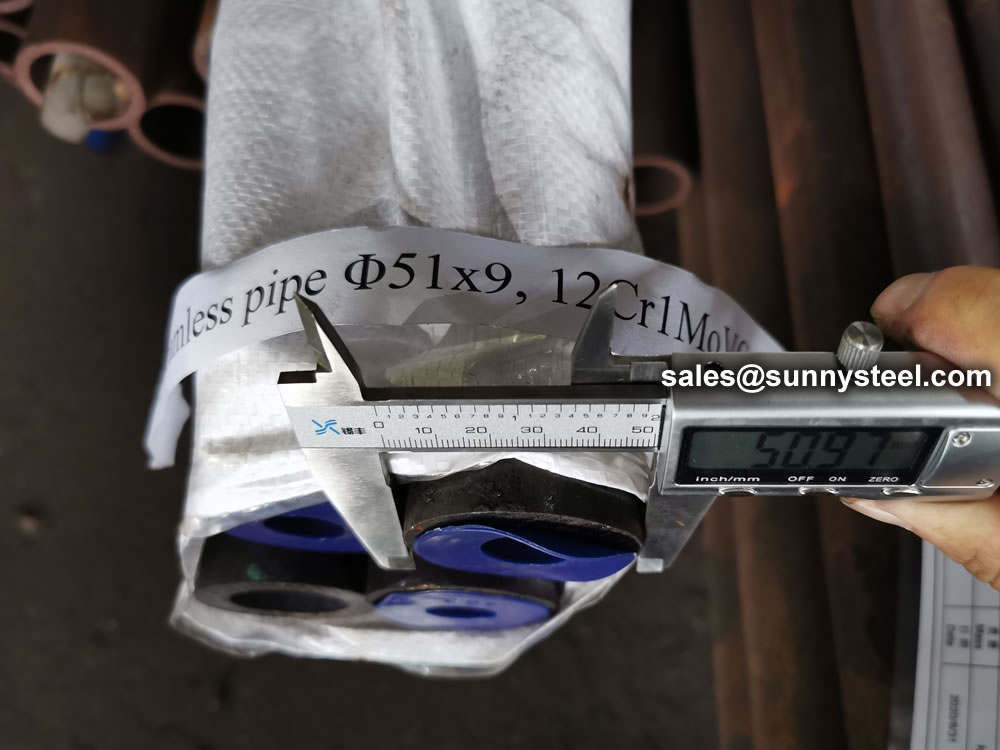
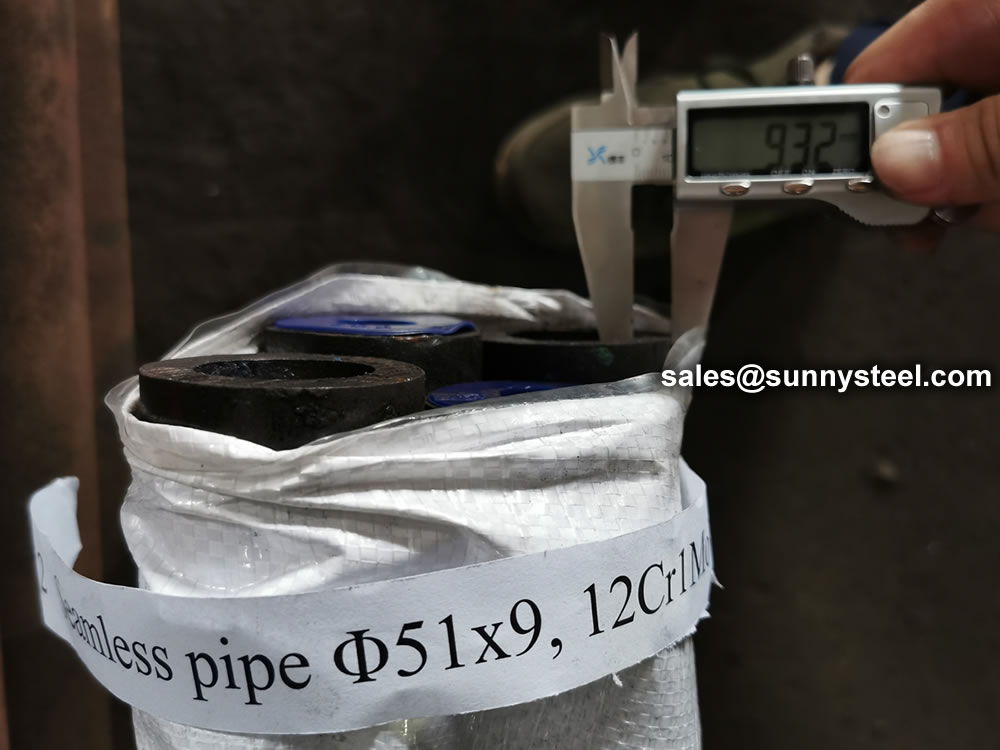
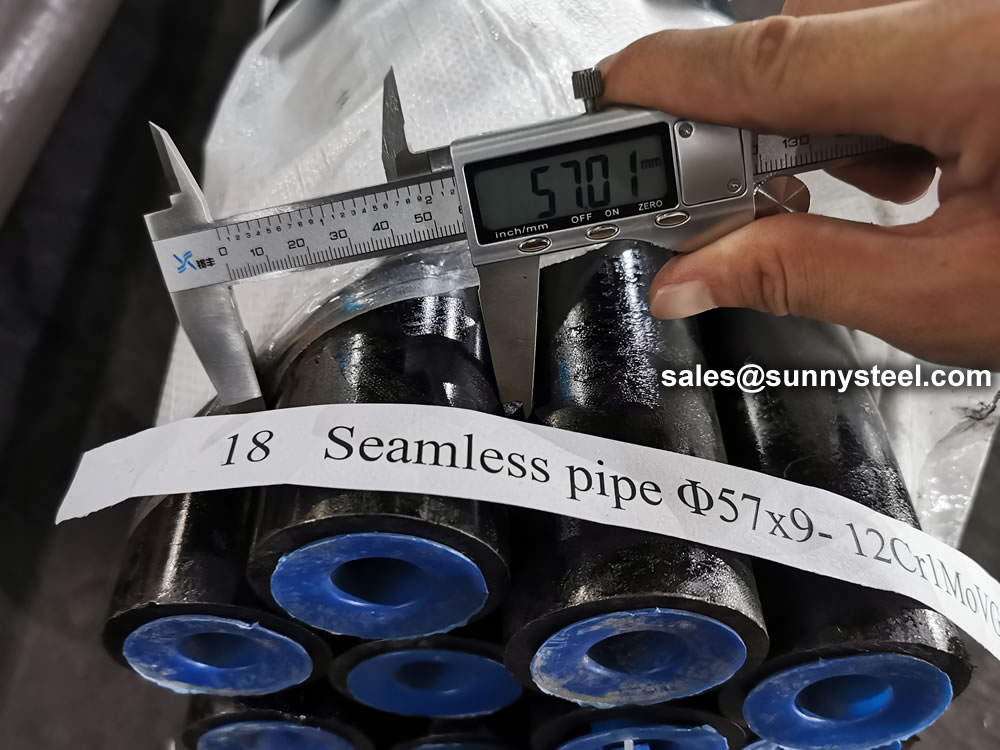

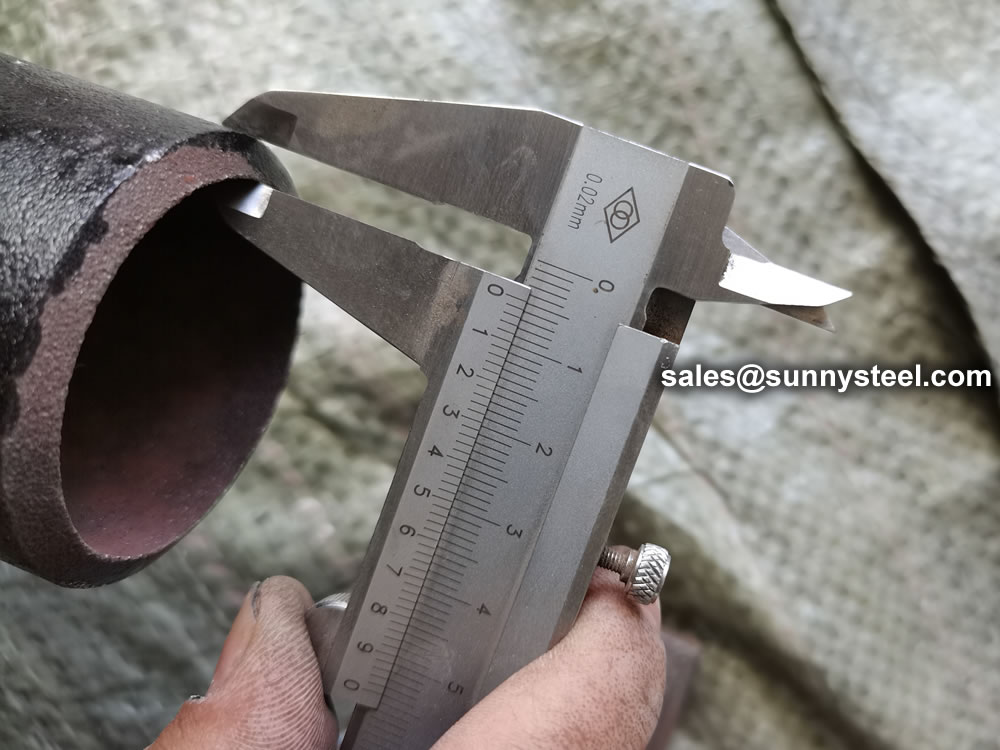

12Cr1MoV is a high-quality structural steel known for its high strength, good weldability, and excellent resistance to oxidation and high temperatures. It is commonly used in the manufacture of power plant components, high-pressure pipes, and other applications that require good mechanical properties and corrosion resistance.
12Cr1MoVG is a type of low-alloy heat-resistant steel, which is widely used in high-pressure boilers, steam turbines, power plants, and other industries where high temperature and high pressure are present. It is particularly suitable for the production of large-scale power plant boiler pressure components and other high-temperature and high-pressure equipment, such as superheaters, reheaters, steam pipes, and headers. Its excellent high-temperature strength, oxidation resistance, and creep resistance make it an ideal material for these applications.
With years of expertise, we provide a diverse array of steel tube processing options. From sawing and machining tube blanks to intricate bending and upsetting operations, we actively assist you throughout your projects.
Our capabilities extend to eccentricity reduction and concentricity enhancement through turning and grinding. We excel in creating complex geometries using processes like rotary swaging and axial forming. Additionally, we offer property modifications via partial heat treatment, ensuring tailored solutions for your specific needs.
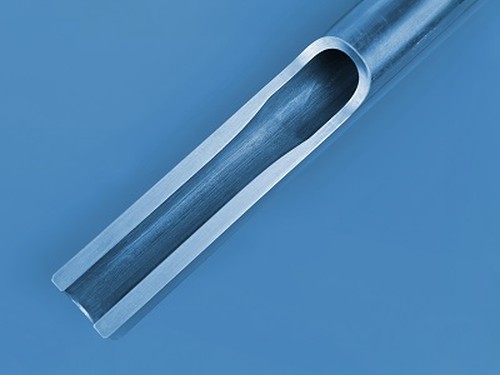

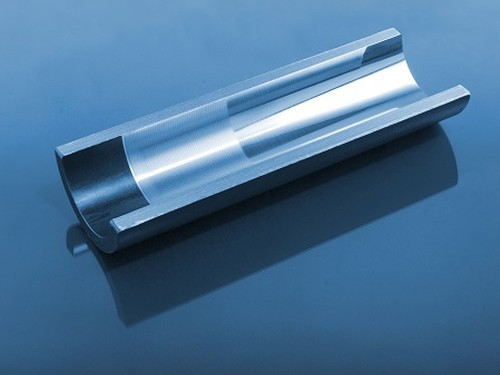
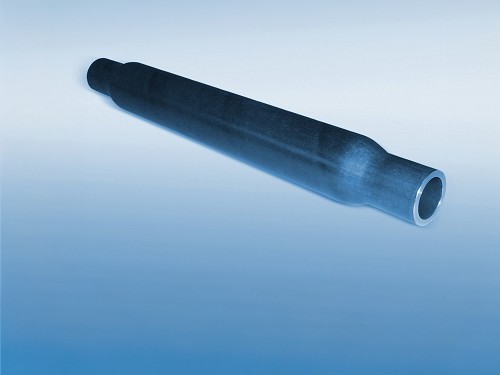





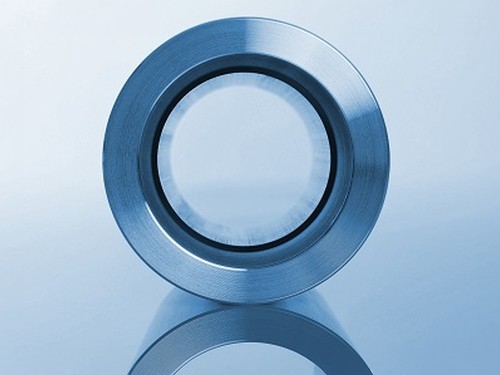
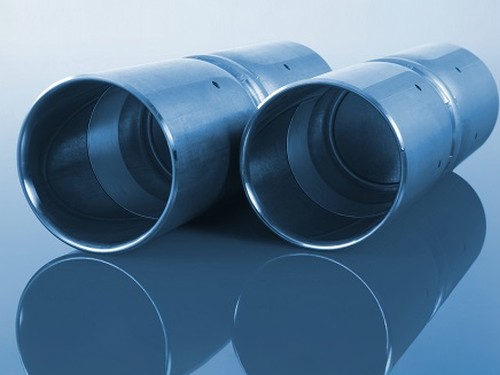

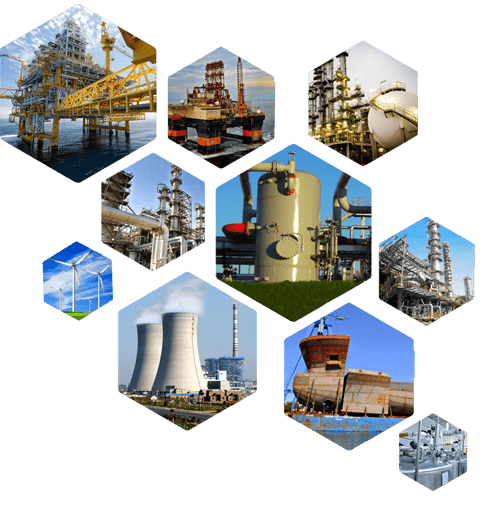
Alloy steel pipes are ideally suitable for chemical, petrochemicals, and other energy-related applications.
The alloy steel pipe adopts high quality carbon steel, alloy structural steel and stainless & heat resisting steel as raw material through hot rolling or cold drawn to be made.
Alloy steel can be used in process area where carbon steel has limitation such as
As an important element of steel products, alloy steel pipe can be divided into seamless steel pipe and welded steel pipe according to the manufacturing technique and tube billet shape.
Here you can see the common alloy steel grade that you will come across.
There are many kinds of materials used for transport in industrial production. Specifically we will have more choices and it is not limited to the use of alloy steel pipe. But even in the face of more choices, many people tend to choose alloy steel pipe. People make their own choices will have their own reasons. This means the alloy steel pipe application has its own advantages. Compared with transmission lines made of other materials, after it meets the basic application requirements, its quantity is lighter. Then in the practical application of alloy steel pipe, it will have more advantages because of this. Besides its physical characteristic advantage, it also has economic advantages. The wide application of alloy steel pipe is with kinds of reasons. So in practical usage, we can exploit the advantages to the full, in this way can we get more profits in these applications of alloy steel pipe.
The transportation of kinds of gases or liquids in production needs to rely on alloy steel pipe. This shows that the actual role of alloy steel pipe application is important. High temperature resistant and low temperature resistant is the tolerance of temperature. In the practical application of alloy steel pipe, there will be many materials need to be transported. However their temperatures are not the same. So this can be the basic requirement to alloy steel pipe. It needs more corrosion resistance. Corrosion resistant material is the best material during transporting, because it is corrosion resistant. So it can be used in more occasions. And it is definitely very convenient for users.
Can be 100% recycled, environmentally friendly, energy-saving, resource conservation, national strategy, national policy to encourage the expansion of the field of application of high-pressure alloy pipe. Of alloy steel pipe total consumption accounted steel in the proportion is only half of the developed countries, to expand the field of use of the alloy steel pipe to provide a wider space for the development of the industry. The future needs of the average annual growth of China’s high-pressure alloy steel pipe long products up to 10-12%.
Alloy Steel pipe contains substantial quantities of elements other than carbon such as nickel, chromium, silicon, manganese, tungsten, molybdenum, vanadium and limited amounts of other commonly accepted elements such as manganese, sulfur, silicon, and phosphorous.
Our team of experienced sales specialists proudly partners with gas and chemical processors, power generation plants, oil refineries, and related industries to offer piping components and value-added services.
The biggest advantages of alloy steel pipe can be 100% recycled, environmentally friendly, energy-saving, resource conservation, national strategy, national policy to encourage the expansion of the field of application of high-pressure alloy pipe. Of alloy tube total consumption accounted steel in the proportion is only half of the developed countries, to expand the field of use of the alloy tube to provide a wider space for the development of the industry. According to the Chinese Special Steel Association alloy pipe Branch Expert Group, the future needs of the average annual growth of China’s high-pressure alloy pipe long products up to 10-12%.
Steel pipe delivery status(condition): cold / hard (BK), cold / soft (BKW), after cold stress relief annealing (BKS), annealing (GBK), normalized (NBK).
| Term | Symbol | Explanation |
|---|---|---|
| Cold-finished/hard (cold-finished as-drawn) | BK | No heat treatment after the last cold-forming process. The tubes therefore have only low deformability. |
| Cold-finished/soft (lightly cold-worked) | BKW | After the last heat treatment there is a light finishing pass (cold drawing) With proper subsequent processing, the tube can be cold-formed (e.g. bent, expanded) within certain limits. |
| Annealed | GBK | After the final cold-forming process the tubes are annealed in a controlled atmosphere or under vacuum. |
| Normalized | NBK | The tubes are annealed above the upper transformation point in a controlled atmosphere or under vacuum. |
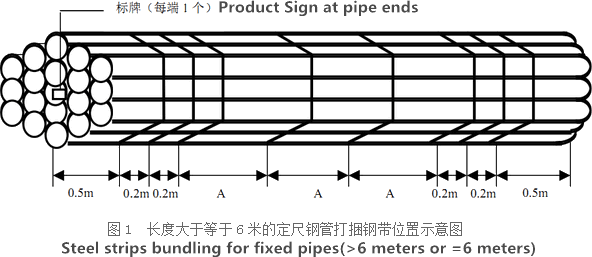
The general cold strip mills, volume should go through continuous annealing (CAPL unit) to eliminate cold hardening and rolling stress, or batch annealing reach the mechanical properties of the corresponding standard specifies. Cold rolled steel surface quality, appearance, dimensional accuracy better than hot-rolled plate, and right-rolled thin product thickness is about 0.18mm, so the majority of users favor.
Cold rolled steel coil substrate products deep processing of high value-added products. Such as electro-galvanized, hot dip galvanized, electro-galvanized fingerprint resistant, painted steel roll damping composite steel, PVC laminating steel plates, etc., so that the excellent quality of these products has a beautiful, high resistance to corrosion, has been widely used.
Cold rolled steel coil finishing after annealing, cut the head, tail, trimming, flattening, smooth, heavy volume, or longitudinal clipboard. Cold-rolled products are widely used in automobile manufacturing, household electrical appliances, instruments, switches, buildings, office furniture and other industries. Steel plate strapping package weight of 3 to 5 tons. Flat sub-volume typically 3 to 10 tons / volume. Coil diameter 6m.
Bare packing/bundle packing/crate packing/wooden protection at the both sides of tubes and suitably protected for sea-worthly delivery or as requested.
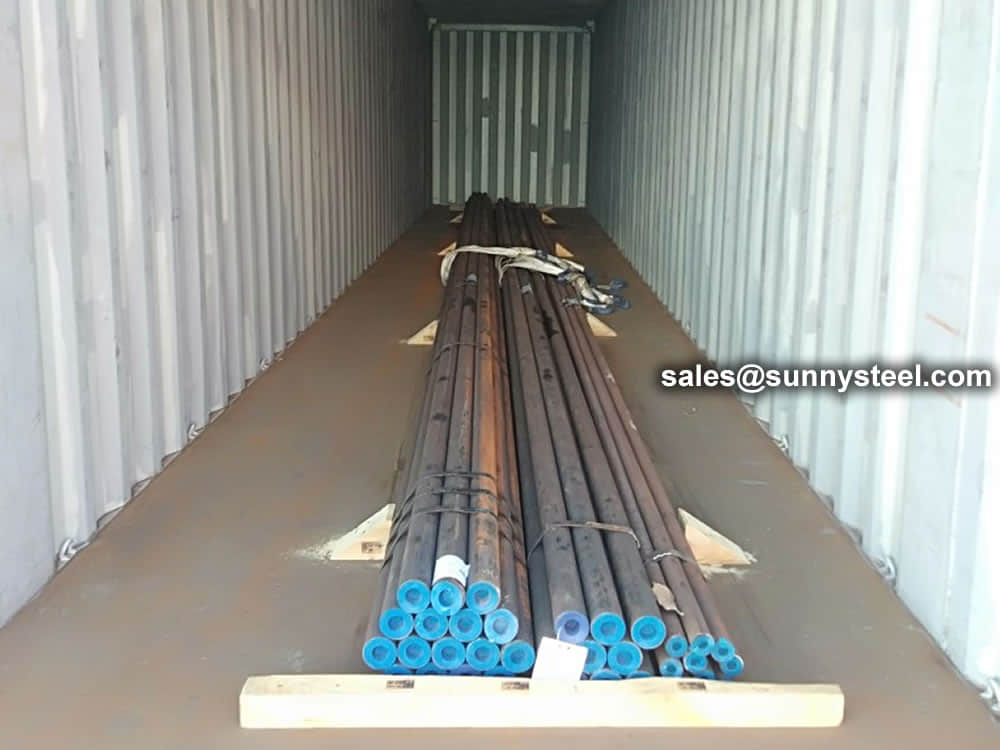

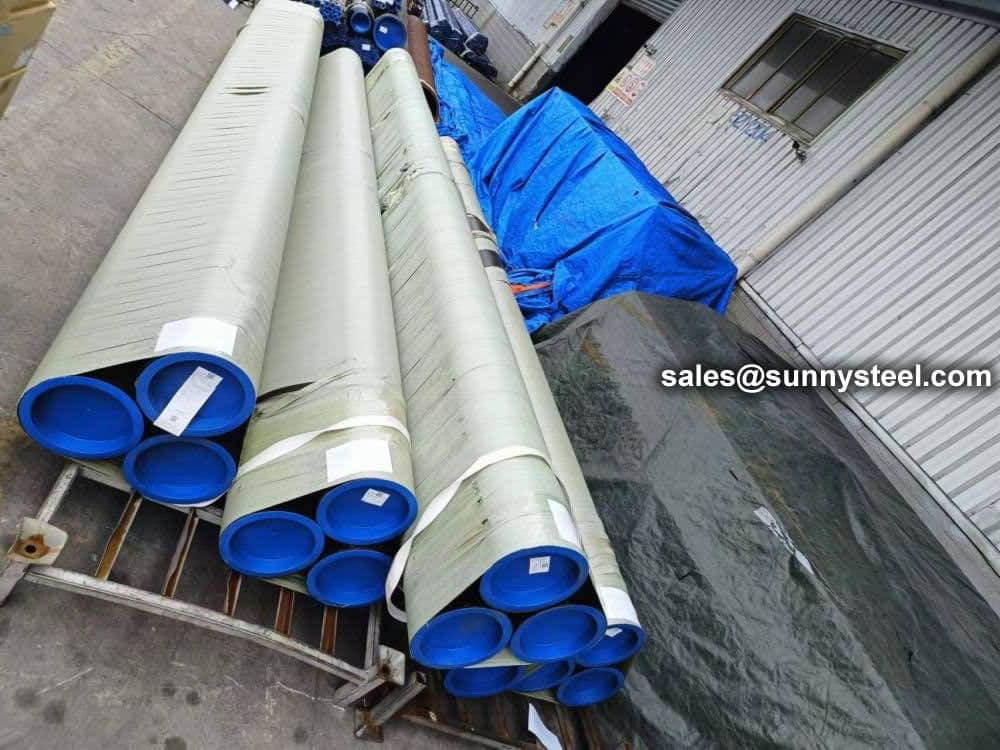


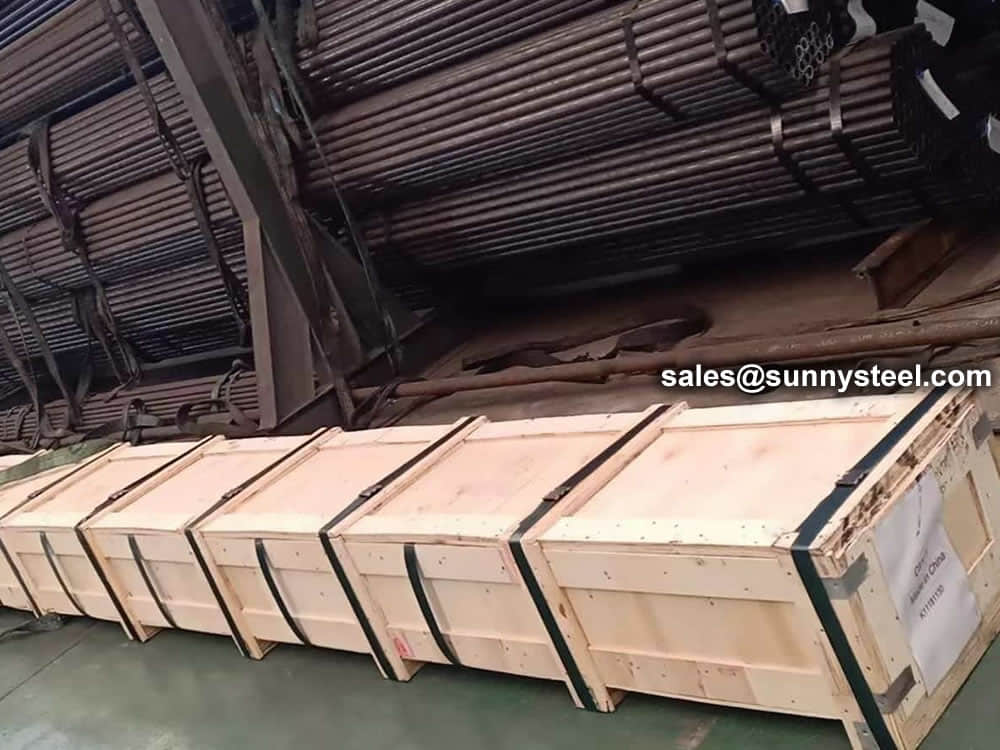


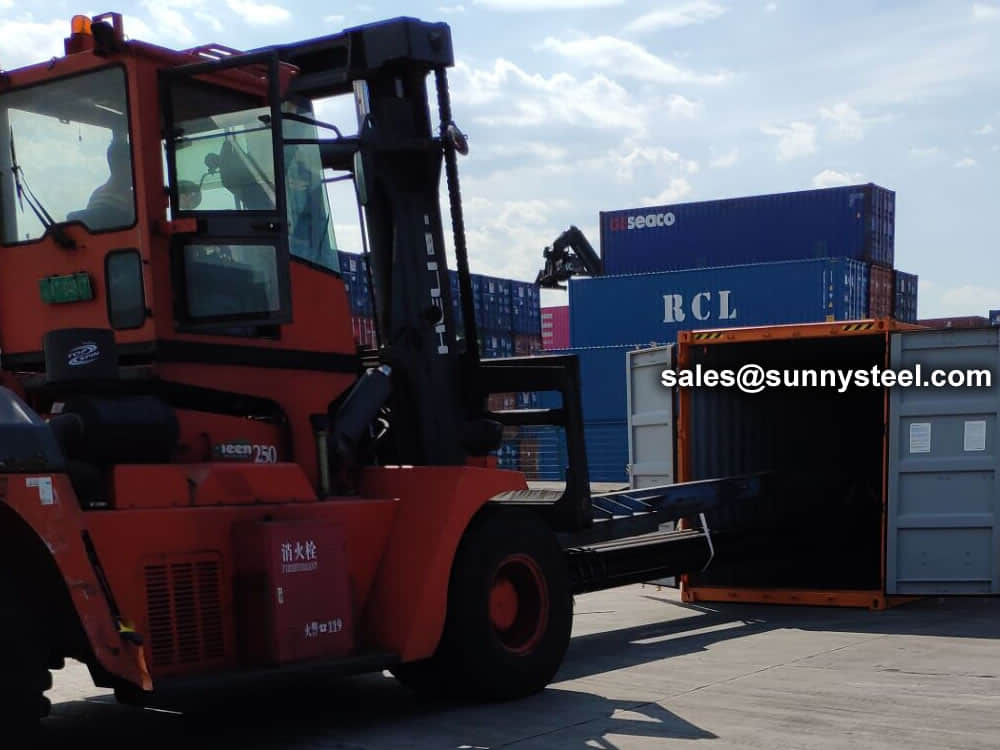
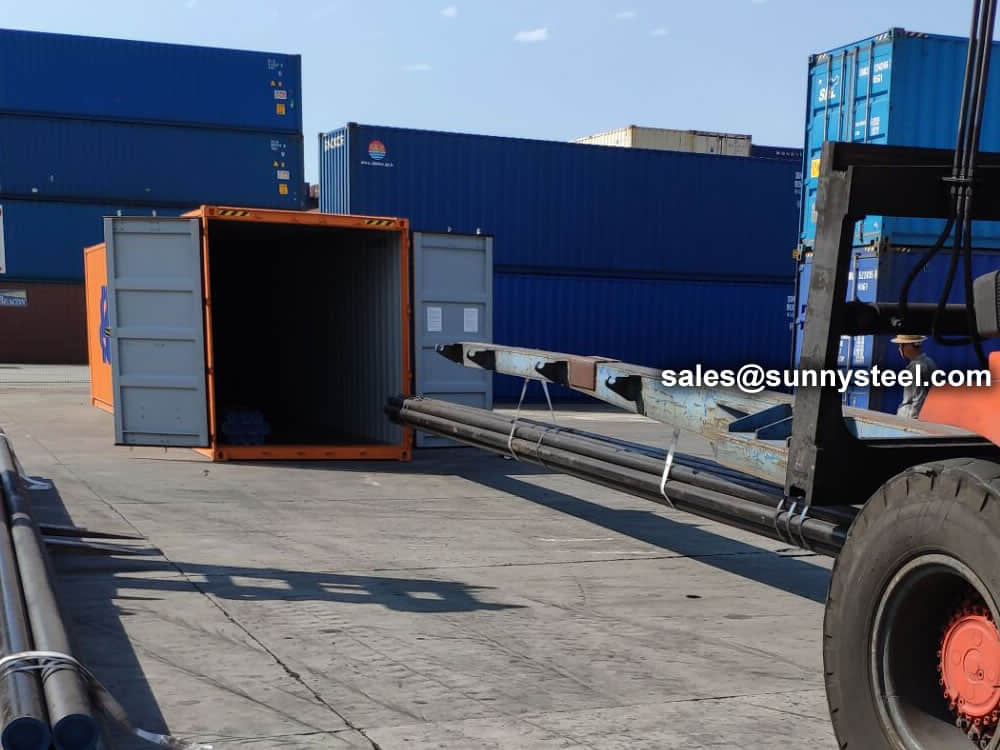


There are probably hundreds of different methods for packing a pipe, and most of them have merit, but there are two principles that are vital for any method to work prevent rusting and Sea transportation security.
Our packing can meet any needs of the customers.
Our team of experienced sales specialists proudly partners with gas and chemical processors, power generation plants, oil refineries, and related industries to offer piping components and value-added services.
Alloy steels are made by combining carbon steel with one or several alloying elements, such as manganese, silicon, nickel, titanium, copper, chromium and aluminum. These metals are added to produce specific properties that are not found in regular carbon steel. The elements are added in varying proportions (or combinations) making the material take on different aspects such as increased hardness, increased corrosion resistance, increased strength, improved formability (ductility); the weldability can also change.
Commonly used alloying elements and their effects are listed in the table given below.
| Alloying Elements | Effect on the Properties |
|---|---|
| Chromium | Increases Resistance to corrosion and oxidation. Increases hardenability and wear resistance. Increases high temperature strength. |
| Nickel | Increases hardenability. Improves toughness. Increases impact strength at low temperatures. |
| Molybdenum | Increases hardenability, high temperature hardness, and wear resistance. Enhances the effects of other alloying elements. Eliminate temper brittleness in steels. Increases high temperature strength. |
| Manganese | Increases hardenability. Combines with sulfur to reduce its adverse effects. |
| Vanadium | Increases hardenability, high temperature hardness, and wear resistance. Improves fatigue resistance. |
| Titanium | Strongest carbide former. Added to stainless steel to prevent precipitation of chromium carbide. |
| Silicon | Removes oxygen in steel making. Improves toughness. Increases hardness ability |
| Boron | Increases hardenability. Produces fine grain size. |
| Aluminum | Forms nitride in nitriding steels. Produces fine grain size in casting. Removes oxygen in steel melting. |
| Cobalt | Increases heat and wear resistance. |
| Tungsten | Increases hardness at elevated temperatures. Refines grain size. |

When you partner with Sunny Steel, you can stop worrying about meeting deadlines thanks to our responsive and timely service. You'll also say goodbye to unnecessary shopping around. Instead, you'll get white glove service from an expert who understands your needs and can get you the materials you need quickly.
